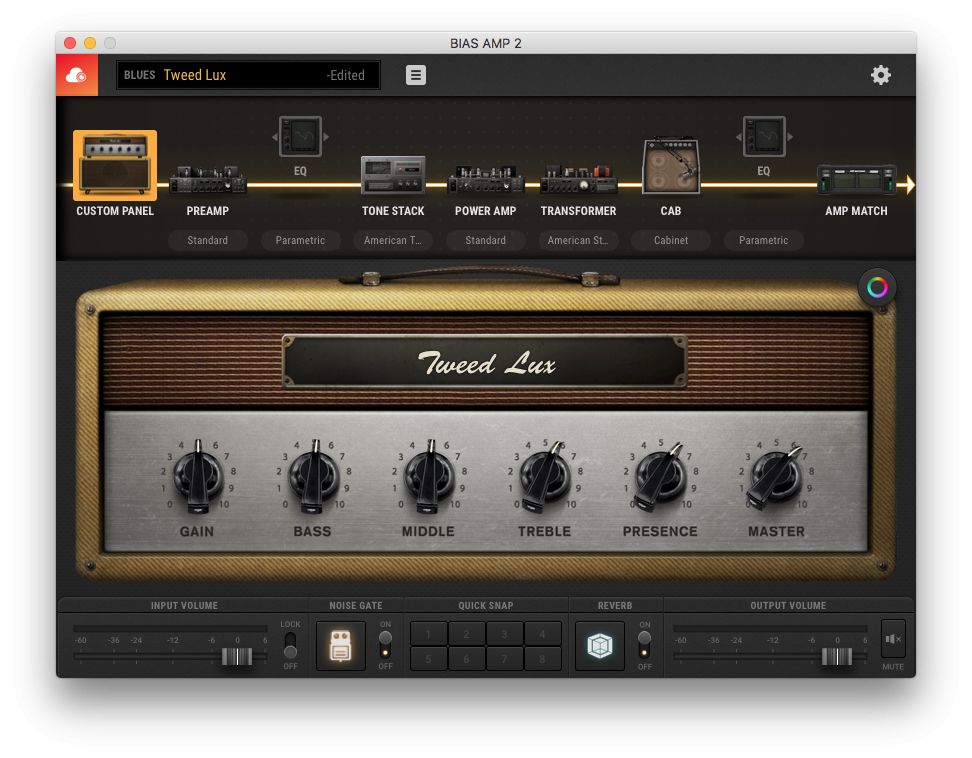

Of course, you don’t need or have to do this, but I would suggest it is one of the coolest aspects of this particular software package. You can easily get lost in this endless tweaking and if like me, you enjoy dabbling, then this is actually a lot of fun and allows you to create some very custom models to play through. Plus, you can run your virtual tubes with hotter or cooler biasing to recreate the effect that this has on an amp’s overall tonality. For instance, you can swap out preamp tubes and also power amp valves, or you could completely swap out the preamp section of one amp model and drop in another, therefore building your own hybrid virtual amplifier. With plenty of control over each and every aspect of the various amp models, the cabinets and also the microphone placement, BIAS Amp 2 has many options at a component level, meaning that you can seriously tailor your tones. It is a simple thing, but does make a difference and means less loading up time and overheads when you just want to play or build your own tones. One thing I did enjoy was that I can run BIAS Amp 2 without loading up my DAW, as it will happily run standalone and it means I could just audition and create my own patches quickly without needing to fire up Logic Pro X on my iMac. Currently, there is a sale on and so you can shave $30 off of each of those two prices as well.

However, you can buy their BIAS FX Standard from $99 or the FX Pro at $199 if you want an integrated effects solution and the two work together, I did not test the effects and so will only be writing about my experiences with the Elite version of the software. Unlike Line 6’s Helix it does not include the effects, apart from a basic reverb and a noise gate, so you need to take this into account if you are really counting the pennies. It caters for different budgets, with the Standard version coming in at $99, Pro at $199 and Elite at $299. Positive Grid’s BIAS Amp 2 has three distinct versions, with the price rising as features are added.


 0 kommentar(er)
0 kommentar(er)
